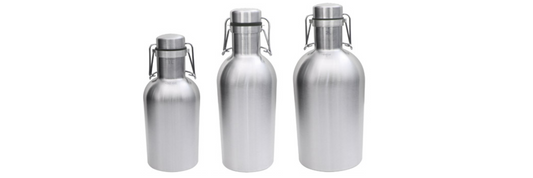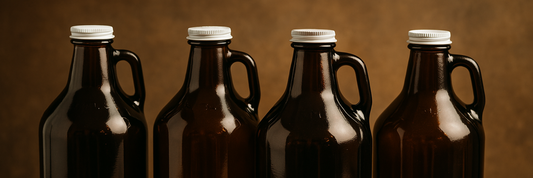In the world of packaging, glass bottles play a crucial role across industries like food and beverage, cosmetics, and pharmaceuticals. Understanding the differences between custom and standard glass bottles can help brands make informed decisions that align with their needs and goals.
- Glass vs. Plastic Bottles: What’s Better For Juice?
- Glass vs. Plastic Baby Bottles: Which Is Better?
Overview of Glass Bottles in Packaging
Glass bottles are highly valued for their durability, non-reactive nature, and aesthetic appeal. They are used extensively for packaging liquids and other products, ensuring safety and maintaining quality.
Importance of Glass Bottles for Various Industries
Industries such as food and beverage, cosmetics, and pharmaceuticals depend on high-quality packaging to maintain product integrity. Glass bottles offer a timeless packaging solution that caters to both functionality and appearance.
Purpose of Comparing Custom vs. Standard Glass Bottles
Brands often face the decision of choosing between custom and standard glass bottles. Custom bottles offer unique design possibilities that elevate brand identity, while standard bottles are practical and cost-effective. Understanding when to choose each option is essential for efficient brand management.
Custom vs. Standard Glass Bottles: Key Differences
Design Flexibility
Custom glass bottles provide extensive design options, including unique shapes, personalized embossing, and varied color choices. Brands seeking distinct and memorable packaging may find this route appealing. On the other hand, standard glass bottles come in common shapes and colors, making them ideal for straightforward packaging needs.

Brand Differentiation and Customer Appeal
Custom bottles contribute to strong brand recognition and appeal by offering a unique and premium experience to consumers. Standard bottles, while less customizable, are reliable and cost-efficient, appealing to brands that prioritize practicality over standout designs.
Cost Comparison
Custom glass bottles usually incur higher costs due to mold creation, specialized designs, and smaller production volumes. Standard glass bottles, with their established production processes and bulk availability, are more affordable and better suited for brands with limited budgets.
Lead Times and Production Speed
Custom glass bottles generally have longer lead times due to design development and mold manufacturing. In contrast, standard glass bottles are readily available and can be sourced quickly, reducing overall production timelines.
Environmental Impact and Sustainability
Both custom and standard glass bottles support sustainability goals as glass is recyclable and reusable. However, custom bottles may require additional energy in the design and production process, which could impact the overall carbon footprint.
Factors to Consider When Choosing Custom vs. Standard Glass Bottles
Budget Constraints
Small businesses or startups may prefer standard glass bottles due to their lower initial costs. Larger brands with a bigger budget might invest in custom bottles for enhanced branding and unique packaging.
Branding Needs
If a strong brand identity is crucial, custom bottles are worth the investment for their differentiation and visual impact. For brands focusing on efficiency and practicality, standard bottles provide an effective solution.
Product Type and Industry Requirements
Industries with specific packaging needs, such as cosmetics or specialty beverages, might benefit from custom bottles. For general applications, standard bottles are often sufficient.
Sustainability Goals
Both custom and standard glass bottles can align with sustainability initiatives. Choosing recyclable or reusable glass materials supports eco-friendly practices.
Customization Options for Glass Bottles
Shape and Size Variations
Custom bottles can be tailored into various shapes like round, square, or vintage-inspired designs, giving brands creative freedom in their packaging.

Color and Finish
Options range from clear and traditional amber to striking blue and green. Brands can also choose between matte or glossy finishes for added appeal.
Labeling and Printing
Custom options include in-bottle embossing, screen printing, and unique labeling designs that enhance the aesthetic and functional aspects of the packaging.
Cap and Closure Options
Custom closures, such as corks, metal lids, or plastic caps, can add to the distinctiveness of the bottle design.

Embossing and Debossing
Embossed or debossed details can give bottles a luxurious feel and reinforce brand logos and messaging.
Conclusion
Summary of Benefits and Drawbacks
Custom glass bottles offer unparalleled design flexibility and brand differentiation but come at a higher cost and longer production times. Standard glass bottles provide cost-effective, readily available solutions with less design variety.
Recommendation for Choosing Based on Brand Goals
For brands prioritizing unique packaging and strong visual branding, custom glass bottles are an ideal choice. For those focused on budget, speed, and practicality, standard glass bottles provide an excellent alternative. Each option has its strengths, and choosing the right one depends on your brand’s specific needs and objectives.









